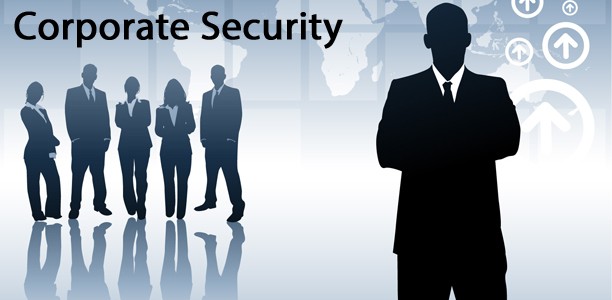Corporate Security Introduced: Protecting Your Assets and Credibility
Corporate Security Introduced: Protecting Your Assets and Credibility
Blog Article
From Cybersecurity to Physical Actions: Reinforcing Business Security in a Transforming Globe
By integrating the staminas of both cybersecurity and physical safety, business can create a detailed defense technique that addresses the diverse range of threats they encounter. In this conversation, we will explore the changing hazard landscape, the demand to incorporate cybersecurity and physical security, the application of multi-factor authentication measures, the value of worker understanding and training, and the adaptation of protection actions for remote labor forces. By checking out these crucial areas, we will obtain valuable understandings right into just how companies can strengthen their company protection in an ever-changing world.
Understanding the Altering Danger Landscape
The progressing nature of the contemporary world demands a detailed understanding of the changing hazard landscape for efficient corporate protection. In today's interconnected and electronic age, risks to company safety and security have ended up being more complicated and sophisticated. As innovation breakthroughs and organizations end up being significantly reliant on digital infrastructure, the capacity for cyberattacks, information breaches, and various other security breaches has actually considerably increased. It is vital for organizations to stay informed and adapt their safety gauges to deal with these developing threats.
One secret facet of comprehending the changing threat landscape is recognizing the different types of risks that companies encounter. Cybercriminals are constantly developing brand-new strategies to manipulate susceptabilities in computer system systems and networks. These threats can range from malware and ransomware attacks to phishing scams and social engineering tactics. Furthermore, physical dangers such as burglary, criminal damage, and company reconnaissance remain prevalent issues for businesses.
Tracking and evaluating the threat landscape is essential in order to identify possible risks and susceptabilities. This includes staying updated on the current cybersecurity patterns, examining threat intelligence records, and conducting routine danger assessments. By understanding the changing hazard landscape, companies can proactively apply appropriate safety actions to minimize dangers and shield their possessions, online reputation, and stakeholders.
Integrating Cybersecurity and Physical Protection
Incorporating cybersecurity and physical safety and security is essential for thorough corporate defense in today's electronic and interconnected landscape. As organizations progressively count on technology and interconnected systems, the limits between physical and cyber threats are ending up being blurred. To effectively safeguard versus these threats, an all natural approach that integrates both cybersecurity and physical safety measures is important.
Cybersecurity concentrates on protecting digital properties, such as networks, systems, and data, from unapproved gain access to, disturbance, and burglary. Physical protection, on the other hand, includes measures to secure physical assets, people, and centers from vulnerabilities and risks. By integrating these 2 domains, companies can address vulnerabilities and risks from both physical and electronic angles, thereby enhancing their general protection posture.
The integration of these two self-controls permits an extra extensive understanding of safety and security dangers and allows a unified reaction to occurrences. Physical gain access to controls can be boosted by integrating them with cybersecurity protocols, such as two-factor verification or biometric recognition. Similarly, cybersecurity procedures can be enhanced by physical protection procedures, such as monitoring electronic cameras, alarms, and secure access factors.

Applying Multi-Factor Authentication Steps
As companies increasingly prioritize thorough security procedures, one reliable approach is the application of multi-factor verification steps. Multi-factor verification (MFA) is a safety and security technique that calls for users to supply numerous kinds of identification to access a system or application. This approach adds an added layer of defense by incorporating something the user knows, such as a password, with something they have, like a finger print or a protection token.
By implementing MFA, companies can significantly enhance their safety and security position - corporate security. Standard visit the site password-based authentication has its constraints, as passwords can be quickly endangered or neglected. MFA alleviates these dangers by including an extra authentication aspect, making it extra hard for unapproved people to acquire accessibility to delicate info
There are several types of multi-factor authentication methods available, including biometric verification, SMS-based confirmation codes, and hardware symbols. Organizations require to examine their particular demands and choose the most suitable MFA remedy for their requirements.
However, the execution of MFA should be carefully planned and executed. It is critical to strike an equilibrium between safety and security and functionality to stop individual aggravation and resistance. Organizations should additionally take into consideration prospective compatibility concerns and offer appropriate training and support to make certain a smooth shift.
Enhancing Staff Member Recognition and Training
To strengthen business safety and security, companies need to focus on enhancing worker awareness and training. In today's quickly advancing hazard landscape, employees play a critical function in safeguarding a company's sensitive details and assets. However, numerous safety and security violations occur because of human mistake or lack of recognition. Therefore, organizations need to spend in detailed training programs to educate their employees about possible threats and the most effective techniques for minimizing them.
Efficient worker understanding and training programs need to cover a wide variety of subjects, consisting of information protection, phishing attacks, social engineering, password health, and physical security steps. These programs must be tailored to the particular needs and obligations of various staff member duties within the company. Routine training simulations, workshops, and sessions can help staff members create the necessary skills and knowledge to recognize and react to safety and security risks effectively.
Moreover, companies ought to encourage a society of protection recognition and offer ongoing updates and tips to keep staff members educated regarding the latest dangers and mitigation techniques. This can be done through internal interaction networks, such as newsletters, intranet sites, and email projects. By cultivating a security-conscious workforce, companies can substantially reduce the chance of safety and security cases and shield their useful assets from unauthorized accessibility or compromise.

Adapting Safety And Security Procedures for Remote Labor Force
Adjusting corporate safety and security procedures to suit a remote labor force is important in making sure the defense of delicate details and properties (corporate security). With the boosting fad of remote job, companies have to apply appropriate safety and security steps to reduce the dangers related to this new method of working
One important element of adapting safety and security procedures for remote job is establishing secure communication channels. Encrypted messaging platforms and virtual private networks (VPNs) can help safeguard sensitive information and prevent unauthorized accessibility. In addition, companies need to apply using strong passwords and multi-factor authentication to enhance the safety and explanation security of remote access.
An additional crucial consideration is the implementation of secure remote accessibility options. This includes offering employees with secure accessibility to business resources and data through digital desktop computer infrastructure (VDI), remote desktop computer protocols (RDP), or cloud-based remedies. These modern technologies guarantee that delicate info continues to be secured while allowing employees to do their roles efficiently.

Finally, thorough security recognition training is important for remote staff members. Educating sessions should cover best techniques for safely accessing and taking care of sensitive information, recognizing and reporting phishing attempts, and preserving the total cybersecurity health.
Verdict
In conclusion, as the danger landscape continues to develop, it is essential for companies to enhance their safety and security determines both in the cyber and physical domains. Incorporating cybersecurity and physical safety and security, implementing multi-factor authentication steps, and boosting worker awareness and training are crucial steps in the direction of accomplishing try these out durable business security.
In this discussion, we will explore the transforming risk landscape, the demand to integrate cybersecurity and physical protection, the execution of multi-factor verification measures, the value of staff member understanding and training, and the adjustment of security measures for remote labor forces. Cybersecurity steps can be complemented by physical protection steps, such as monitoring electronic cameras, alarms, and safe and secure access points.
As organizations significantly focus on comprehensive safety measures, one efficient technique is the application of multi-factor authentication steps.In verdict, as the hazard landscape continues to develop, it is critical for companies to strengthen their safety gauges both in the cyber and physical domain names. Incorporating cybersecurity and physical safety, applying multi-factor verification measures, and enhancing employee understanding and training are crucial actions in the direction of achieving robust company protection.
Report this page